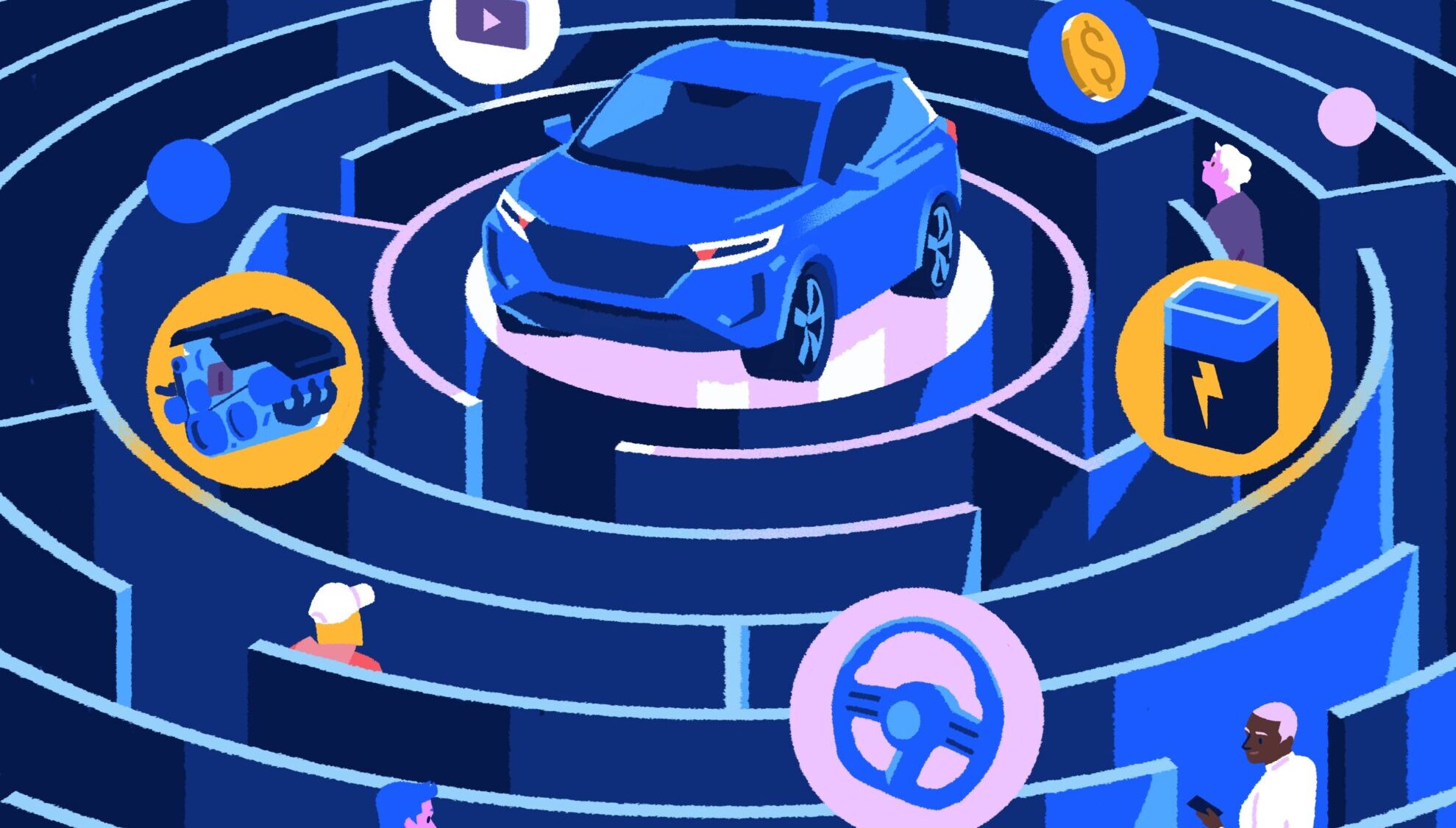Cars and trucks are more capable and reliable than ever. There’s a ton of choice too, with new brands joining established players, especially when it comes to the rising number of electric vehicles (EVs). The problem is finding what you want.
The “chip shortage”—an interruption in the supply of microprocessors due to COVID shutdowns—has had a widespread and lasting impact on the auto industry. A drive past your local dealer in the past 18 months will have revealed empty lots where once rows of shiny new cars and trucks awaited new owners. It’s taken time, but according to industry experts, the situation should ease by the end of 2023. That should make new vehicles easier to find and increase the chances of paying at or below the manufacturer’s suggested retail price (MSRP).
But don’t expect a quick return to pre-pandemic sales practices. As buyers have become accustomed to ordering from the factory and waiting months for what they want, dealers and automakers have realized they don’t need acres of vehicles on the lot, ready to be sold at a discount. “Pre-COVID prices are probably gone,” says Kevin Roberts, director of industry insights and analytics at CarGurus, an online marketplace for new and used vehicles. “Part of that is [due to] additional new features and tech going into vehicles. But automakers say they don’t want to go back to the old style of new-vehicle inventory. Dealers are somewhat happy with the new normal as well, because profitability is up on both the new and used sides.”
TRY BEFORE YOU BUY
The online purchasing trend accelerated during those pandemic months when visiting a dealer was problematic. Some manufacturers, especially new brands such as Genesis, offer the entire car-buying journey online, with prices fixed. Most automakers and dealers will facilitate at least some of the process digitally, but beware of the difference between the manufacturer’s build-and-price tools—which display the nonbinding MSRP—and a switch to the local dealer’s website, where the price may be different.
And, as useful as digital tools are, there’s no substitute for checking out a car in person. Getting behind the wheel can help you avoid pitfalls a virtual tour won’t reveal, like whether you can find a comfortable driving position or not, or if the infotainment system is intuitive to use. Take someone with you to provide a second opinion on what you see, feel and hear.
“I always advise people to create a shortlist of, say, three vehicles, and then go drive all three,” says Ryan Peterson, manager of automotive services for CAA Club Group. “See what you like and see what fits you.”
PAY WHAT YOU CAN
Consider your budget and how you intend to pay. If finance is needed, know that interest rate hikes have increased the cost of credit and pushed up monthly payments. Longer borrowing terms will reduce the monthly sum but increase the total cost of borrowing. It’s this number, not the monthly payment, that should be your focus—how much the car will cost in total. If the answer is higher than expected, reconsider those extras that stretch your budget to the limit. The supply shortage has made it harder than ever to negotiate on price, but it’s always worth trying. If you’re not comfortable with haggling, an independent auto broker may be able to secure a better deal.
WHERE TO GET ADVICE
Choosing a car or truck is a personal decision. The volume of information on new and used cars can be overwhelming. Experienced reviewers in established media outlets—whether it’s a print or digital article or a YouTube comparison video—are most likely to have balanced perspectives. Social media influencers, on the other hand, may be predisposed to say nice things about a vehicle if they’re in a paid partnership with an automaker. Impartial assessments by Consumer Reports (which may be free to access through your local library) are a reputable source of information.
And consider practicalities, which you won’t find in a review, such as whether you have easy access or not to a local dealer for servicing and repairs. AMA’s Approved Auto Repair Services™ (AARS) program also provides peace of mind when you’re shopping for a used vehicle. Certified independent repair facilities will conduct AMA’s 139-point vehicle inspection service to give you an honest opinion. At a time when used vehicles are in short supply and prices are high, that reassurance is more valuable than ever.
TO EV OR NOT TO EV
Electrification is an emerging topic for new-car buyers. With federal EV sales mandates on the way and rapidly advancing technology, new electrified models—self-charging regular hybrids, plug-in hybrids and full EVs—are reaching the market almost monthly. More affordable EV models are on the way, but supplies are typically even tighter than for conventional, internal combustion engine (ICE) vehicles, especially in provinces that do not offer a local EV purchase incentive to supplement the federal one. If you’re set on a particular vehicle, expect to wait for it.
Meantime, AMA is supporting EV drivers with charging stations at select locations including Edmonton South, Lethbridge and Medicine Hat. As well, AMA offers mobile charging with two Ford Lightning trucks, one in Edmonton and one in Calgary.
Is an electrified vehicle right for you? Again, it’s a personal decision but with some practical considerations. So-called range anxiety is becoming a thing of the past, with vehicles increasingly hitting the 500-kilometre mark, but it’s true that the public fast-charging infrastructure remains underdeveloped in many areas. If you can charge overnight at home, that will be less of a concern. If you only have street parking and regularly drive long distances, a hybrid option might suit you better than a full EV. Think about how you use your car and assess the options accordingly.
CONSIDERING AN EV?
Visit ama.ab.ca/EV to read more about EVs and evaluate if there’s an EV for you.
